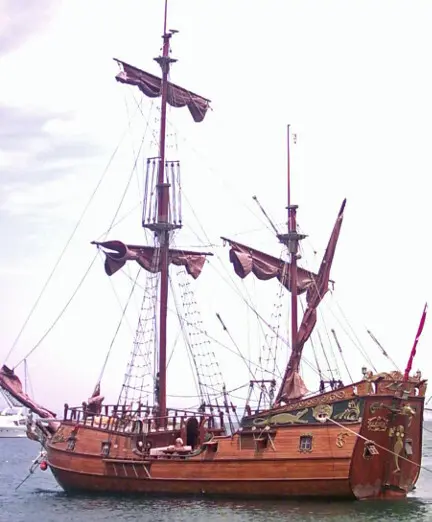Anchor Watch
January 27, 2020
Walt:
<start solemn_voice_overlay>Now, these are the voyages of the Sustainability Research Ship Windward, who’s ongoing mission is to search out viable alternatives to the status quo….”<end solemn_voice_overlay>

a sustainably powered ship at anchor watch
Windward’s central metaphor is that of a ship sailing through time with a crew that’s in search of a better way of living. Since I joined the crew, we’ve ventured out of port four times to test different configurations and headings. Each time, we learned about some things that worked for us, as well as some things that didn’t.
Once a voyage is concluded and the passengers go ashore, a ship will stand off from the dock and drop anchor in the harbor. For the next while, the ship will be at what’s called “anchor watch.” A minimal crew will stay aboard keeping the ship safe and sound, and working to repair the wear and tear from the last voyage. In time, a new crew arrives and the process of heading off on the next voyage of discovery gets underway.
A ship that’s powered by fossil fuels can leave port most any time it wants to, but one that’s sustainably powered has to bide its time and wait for favorable winds. While waiting, the anchor watch crew sorts through the lessons learned on the voyage just concluded and makes plans the next voyage. Some of the lessons learned are joyful, and some are not the nice kind, but they’re all part of the challenge of creating a community that survives by the grace of nature.
Without the stress of running the ship, the anchor watch crew can reflect and formulate plans for the next voyage. It’s natural to focus on the problems encountered–there will always be unpleasant surprises and unintended consequences to sort out–but it’s important to also take time to recognize the gains. Sometimes they’re hard won victories, and sometimes they’re just serendipitous developments, but either way it’s important to lock in the progress.
As the keeper of the log, it’s my duty to complete the record of the last voyage and to make recommendations as to what we can do to be better prepared on our next mission. To step back from the poetic a bit, here’s an example: if you take a look, you’ll notice that our Bylaws were amended on August 8, 2018 to address issues that came up during the last voyage.
For example, we added a paragraph to Article 3: Section 6 reading,
“In a case in which the individual being considered for termination was a sitting Director at the time of their suspension, the vote to terminate their membership must be the unanimous vote of all Steward Directors”.
The goal of the change is to make it a bit more difficult to terminate a director who’s membership had been suspended. The Board can still terminate them at some point down the timeline, but such a decision has to be the unanimous decision of the other Steward Directors. That reflects a desire to ensure that those who’ve put years worth of effort into the organization can’t be easily discarded; ultimately they can be sent away, if in the opinion of all of the other Steward Directors a termination of membership is warranted, but it has to be a unanimous decision arrived at through due process.
By the time someone becomes a Steward Director, they’re an important part of the community, and sending them down the road is going to fundamentally change the community and who we are to each other. This added caution is a continuation of our intent to:
- ensure that the Board has the ability to conduct ordinary business quickly, and
- require the Board to conduct extraordinary business, such as terminating someone’s membership, in a slow, deliberate, reflective, and ultimately fair manner.
Anything less just isn’t sustainable.

The anchor watch phase is also a time in which we give thought to what direction we want to head in next. In this particular anchor watch, we’re focusing a lot of time and thought on developing Herland Forest, our natural burial cemetery.
Perhaps you’ve noticed that not a lot appears to be happening here on the main website; that’s because most of our energy has been going into developing the cemetery. We’re doing cutting edge development work in the field of natural burial and forest conservation, and that exciting work is the primary area we’ve been focusing our creative energy on these days.
That’s not to say that taking care of the animals and the gardens, that improving our existing facilities and finishing the structures already started isn’t important; it always has been and will continue to be. But the rate at which those things will go forward will depend on who shows up and what parts of the sustainability puzzle they’re interested in. So, if you’re interested in finding a working model of a better way, then we’d like to hear from you.
